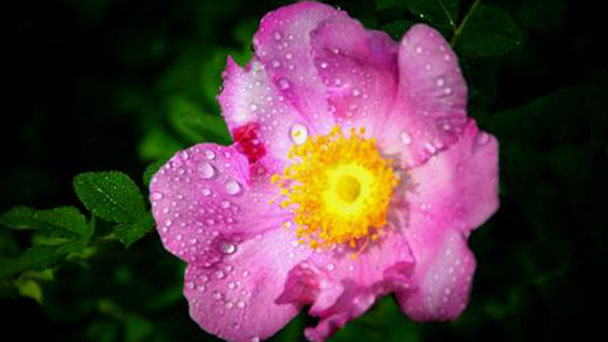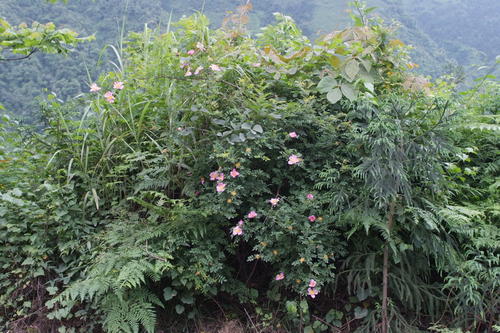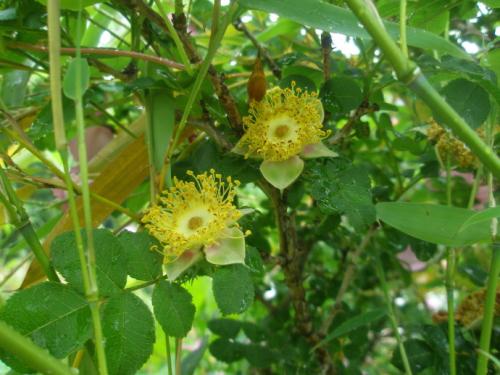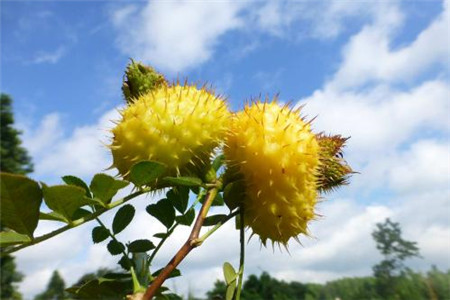How to Grow and Care for Chestnut Rose
Written by Maggie
Oct 15 2021

Chestnut rose can be used as medicine, with anti-diarrhea, dysentery. How do Chestnut rose flowers grow? How to care for Chestnut rose? The following are details of growing Chestnut rose and Chestnut rose care. Please read with me with questions!

Growing Chestnut Rose
Best growing time: Chestnut rose flowers can be autumn sowing or sand to the next spring sowing, cutting in early spring or plum season can be carried out;
Optimal growth soil: The soil requirement is not strict, but with fertile sandy loam is better;
Growth humidity requirements: Maintain a certain air humidity;
Optimum growth temperature: The temperature is generally maintained at 20-25℃, and it has the fastest rooting. Too low temperature, the rooting is slow, and too high is easy to dry up;
Optimum growth light: chestnut rose likes a warm and humid and sunny environment.
Chestnut rose care
Chestnut Rose Fertilizer care
Winter ploughing we can apply human excrement or sprinkle with decaying organic fertilizer, and then turn into the soil, rose growth period to frequently fertilize. Applying top dressing 1-2 times of quick-effect fertilizer. High temperature and drought should be applied to thin fertilizer. Apply once before winter. Before fertilization, we should also pay attention to remove weeds in time.
Chestnut Rose Watering care
Pay attention that in summer, pour enough water. Especially pregnant periods and flowering periods, we must ensure enough water, and also pay attention to the rainy season and do not water.

Chestnut Rose Pruning care
Summer trimming Chestnut rose flowers is mainly to cut grafted rootstock branch flowers. Cut off the residual flowers and sparse to excess buds, reduce food consumption for the next flowering to create good conditions. In order to make the plant beautiful, long branches can be cut to 1/3 or half, branches cut 1/3, in the upper leaf 1 cm oblique cut. If the pruning is too light, Chestnut roses will be longer and higher, branches longer and finer, flowers are also more and more small. In winter, repair to stay branches, and pay attention to the overall shape of Chestnut Rose flower plant. Flower varieties should stay 4-6 branches, 30-45 cm long to choose one side of a strong bud, cut off its upper branches, vine or varieties to thin to old technology, cut off weak branches, sick branches and cultivation of the main trunk.
Chestnut Rose Propagation care
Sowing and cuttings are commonly used for propagation.
Sowing: Seed in September, autumn sowing or sand to the next spring sowing, generally 20-25 days after sowing germinate. Seed can be used for seedling cultivation, but it is difficult to survive because of seed cultivation, so it is not recommended to use seed to cultivate generally. Production on the multi-purpose shoots cuttings seedling, easy to survive. Rare varieties are difficult to cuttage.
Cuttage: It can be carried out in early spring or plum rain season. Cutting is a common method of propagating Chestnut rose. Cutting seedling with the current year, easy to survive. To choose the growth of robust branches without pests and diseases as cuttings. Carefully handle cuttings after selection. The cuttings of the shoots should be cut immediately after harvest to prevent wilting and affect survival. The lower cut of general plant cuttings, if stained with some freshly burned vegetation ash, has the effect of preventing decay. Rooting at 20-25℃ is the fastest for general plants. If the temperature is too low, the rooting will be slow, and if the temperature is too high, the cutting will rot easily. Therefore, if the artificial control of temperature conditions, all the year round cuttings. Under natural conditions, the temperature in spring and autumn is appropriate. When cutting, we should pay attention to the cutting substrate to keep the wet state, and also can not make it too wet, otherwise cause decay. At the same time, attention should also be paid to the humidity of the air. The method of covering plastic film can be used to maintain the humidity, but attention should be paid to ventilation within a certain time.
Chestnut Rose Pest Control
The common diseases and insect pests are powdery mildew, aphids, thorn moths, debt moths, black thorn mealworms and food worms. Powdery mildew occurs in spring and autumn, and should be sprayed with powdery mildew in early June at the beginning of the disease. The control effect can reach 74 {bf} -88 {bf}. It is advisable to spray with 80 {bf} dichlorvos solution 2000 times, which has a good control effect. In addition, it is also effective to leaf cicada, acanthophora, leaf curling moth, small ape leaf worm, etc.B emisia nigrata is parasitic on the backside of the leaves and can be controlled by 2000 times hydrophosphos when pests occur from May to August. Spraying with liquid 2.5 {bf} 6000 times to kill the enemy twice from early July to August can control the foodie insects.

Latest Updated
- Benefits of Bugleweed - 7 Science-backed Health Benefits
- Bugleweed Dangers & Side Effects - Is It Poisonous?
- How to Plant Evergreen Trees - What You Should Know
- When to Plant Evergreens - Grow Guide for Evergreen Trees
- 12 Wonderful Evergreen Shrubs for Your Garden
- 12 Popular Evergreen Plants with Pictures for Beginners
- When And How To Prune A Lilac Bush Like a Pro
- How to Grow & Care for Lilac Vine (Hardenbergia Violacea)
- Japanese Lilac Tree (Syringa Reticulata) Care & Propagation Guide
- Shumard Oak Pros and Cons - What to Know
Popular Articles
- Winter maintenance of Antirrhinum Majus
- How to Grow Terminalia Mantaly Tree
- How to Grow and Care for Crossostephium Chinense
- How to grow Antirrhinum Majus in spring
- Peristeria Elata (Dove Orchid) Profile: Info & Care Guide
- Underwatered Snake Plant (Sansevieria Trifasciata) - Signs And How To Fix
- How to Care for Brazilian Jasmine Plant (Mandevilla Sanderi)
- How to Grow & Care for Graptopetalum Purple Delight in Summer
- Rosa Chinensis (China Rose): Plant Growing & Care Tips
- How to Care for Baby Sun Rose (Aptenia Cordifolia)